A great many techniques, both wet and dry, ultimately use the difference in mass between chaff and seed to sort quickly. And now an example: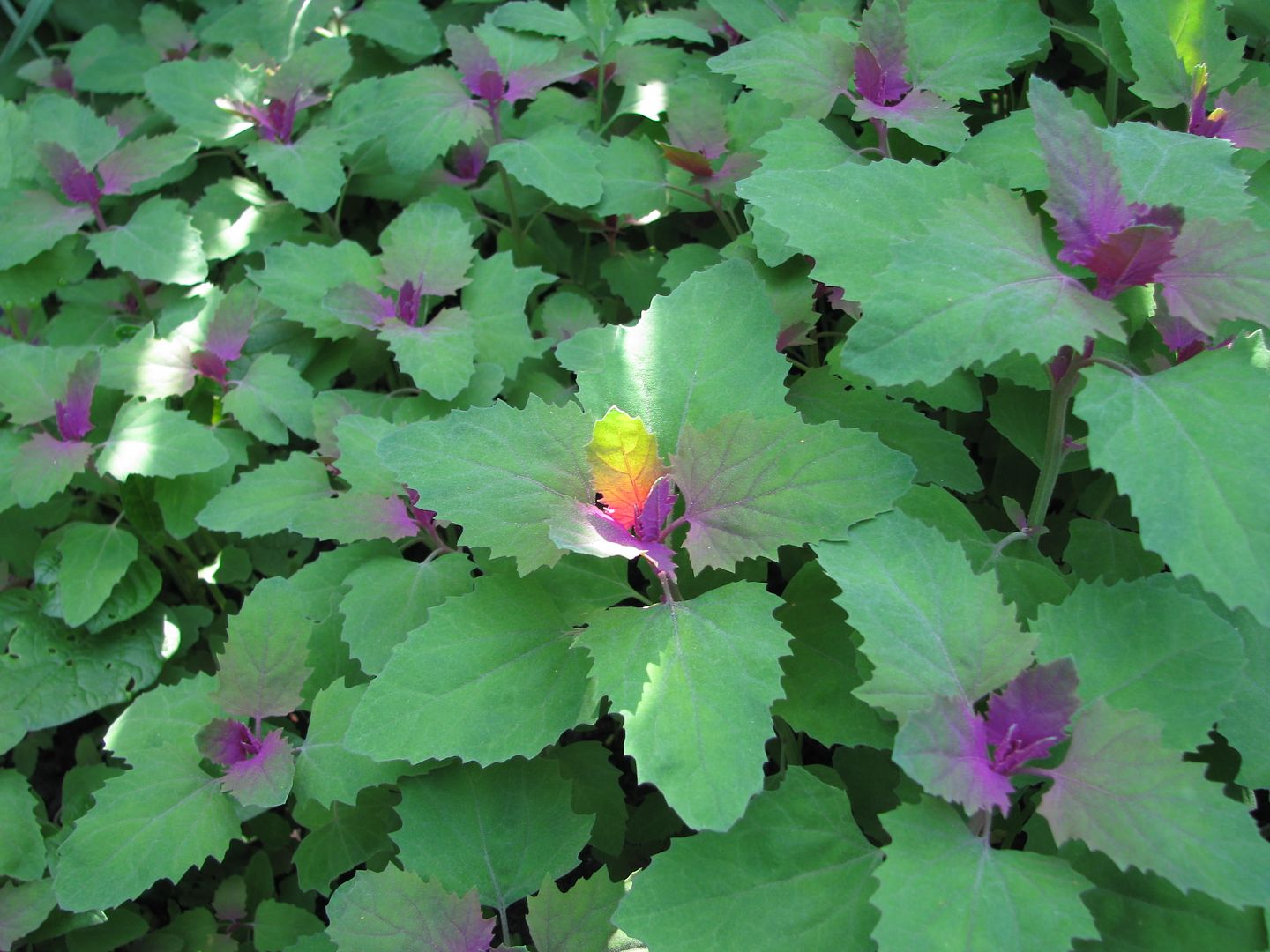
Young magenta spreen, Chenopodium gigantium.
I noticed that small birds like sparrow and chickadee were plucking at the Magenta Spreen so I figured that they must be ripe. It is a gigantic relative of lamb's quarters with a striking fushia centres in early growth. Here is when I get experimental.
Mature plants have sturdy stems up around 6-8 feet tall in my garden. As the season nears its end, they regain their brilliant colouration resembling fall leaves.
Early, I had cut some mature seedheads for indoor drying because the weather is attempting to break another record making this an exceptionally rainy September.
Dry seedheads
I rubbed off the seeds with chaff into a bowl and discarded the stems. Since I'm a lazy gardener, I normally stop here but for the sake of public knowledge dissemination, I thought I'd try and clean the chaff from the seed this time.
The seeds are enveloped in chaff coats that resemble tiny stars when rubbed off. The seeds are round and black.
First I rubbed the seeds gently against a screen but that didn't seem particularly more effective them rubbing them with my hands and I didn't want to scratch them too much so I went back to rubbing them between my fingers.
I tried rubbing across a screen but something about me just likes to get my hands in. It took me forever to start wearing gloves when gardening because I loved to feel the dirt. Only my hands didn't cope well with the drying and abrasive affect of the soil.
To separate the chaff that I had loosened from the small, black seeds, I poured them from one bowl to another - a version of winnowing. Result: fail.
Winnowing in this way is a highly effective technique for separating many seeds from chaff if the chaff is easily blown away by the wind and the seeds are comparitively heavier. This didn't seem to work with these seeds. At least not with today's weather.
Then I chatted with a seed saving friend and he said, why don't you try water separation?
I said, "Indeed why not?"
Still plenty of greenish coloured chaff.
I poured the mess into water. The seeds didn't wet easily so I had to give it a stir and let the seeds settle out for a minute or two.
You can see the good seed at the bottom of the bowl.
The chaff, some seeds - yes, some are lost but we are talking a seed generous Chenopodium here, were poured off the top, leaving the dark clump of nearly pure seed to be strained from the bottom. I did this twice to get the most seeds and the least chaff.
Bye, bye chaff.
The seeds were plopped onto some paper towels then squeezed a bit drier. The fact that water didn't seem to adhere easily made them easy to dry and easy to dump off onto more dry paper towel for final drying. This needs to be done fast so they don't sprout or spoil.
Clean magenta spreen seed.
Thanks nature.
Would you like some magenta spreen seeds? Well you are in luck. I have many more seeds heads to process now that I know what to do. Send me an email - right hand side - and I'll send you seeds.
***

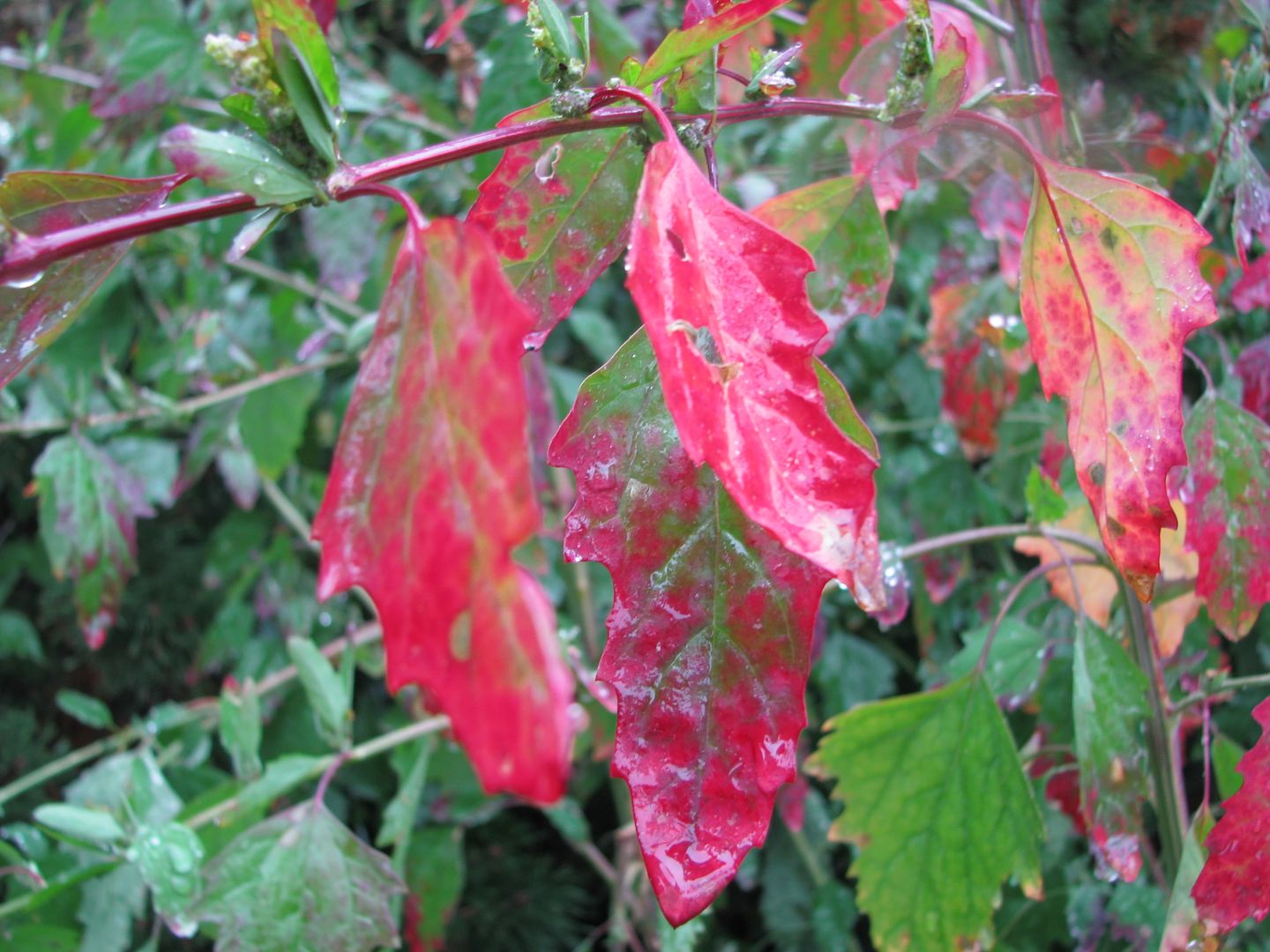
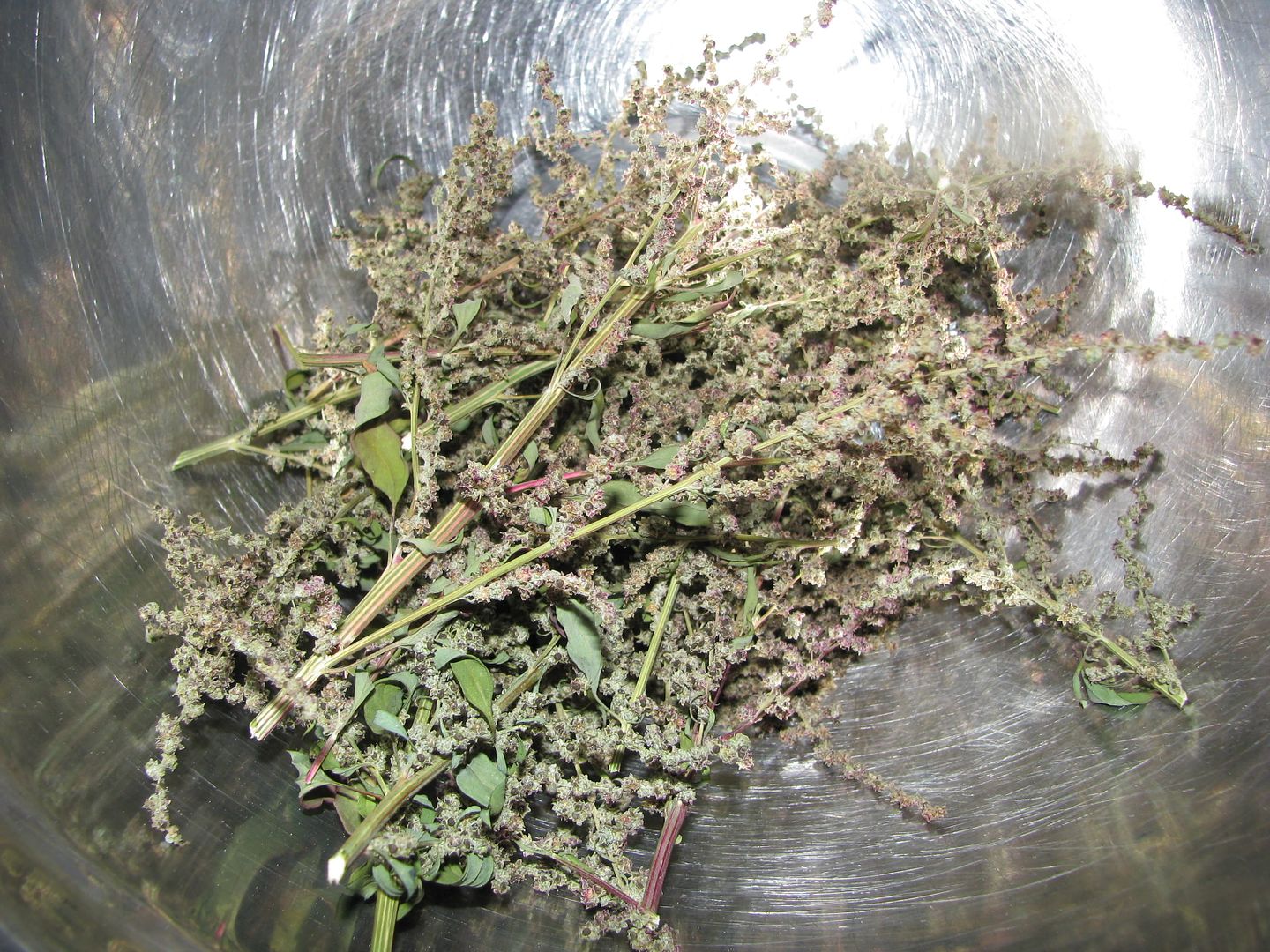
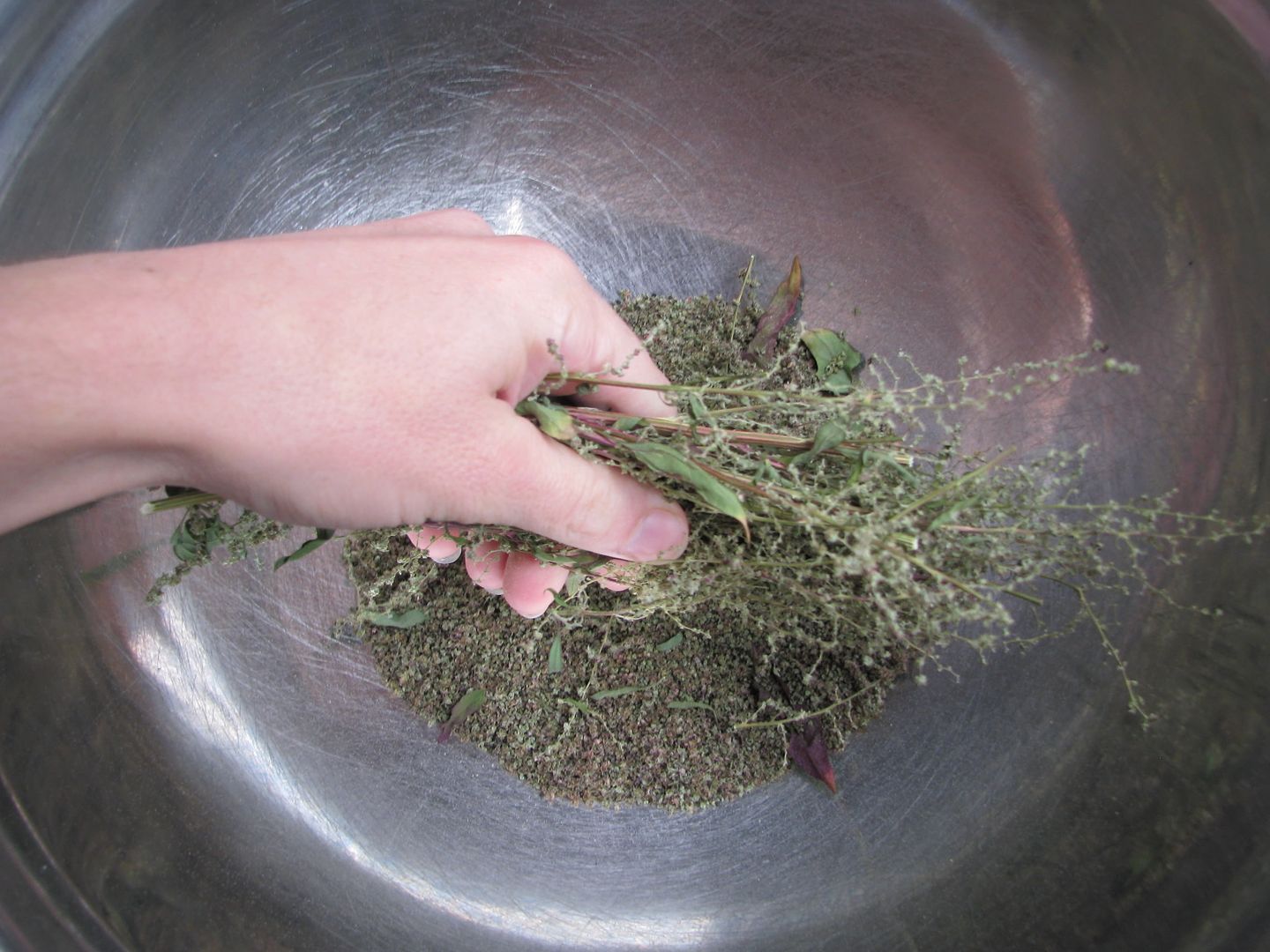
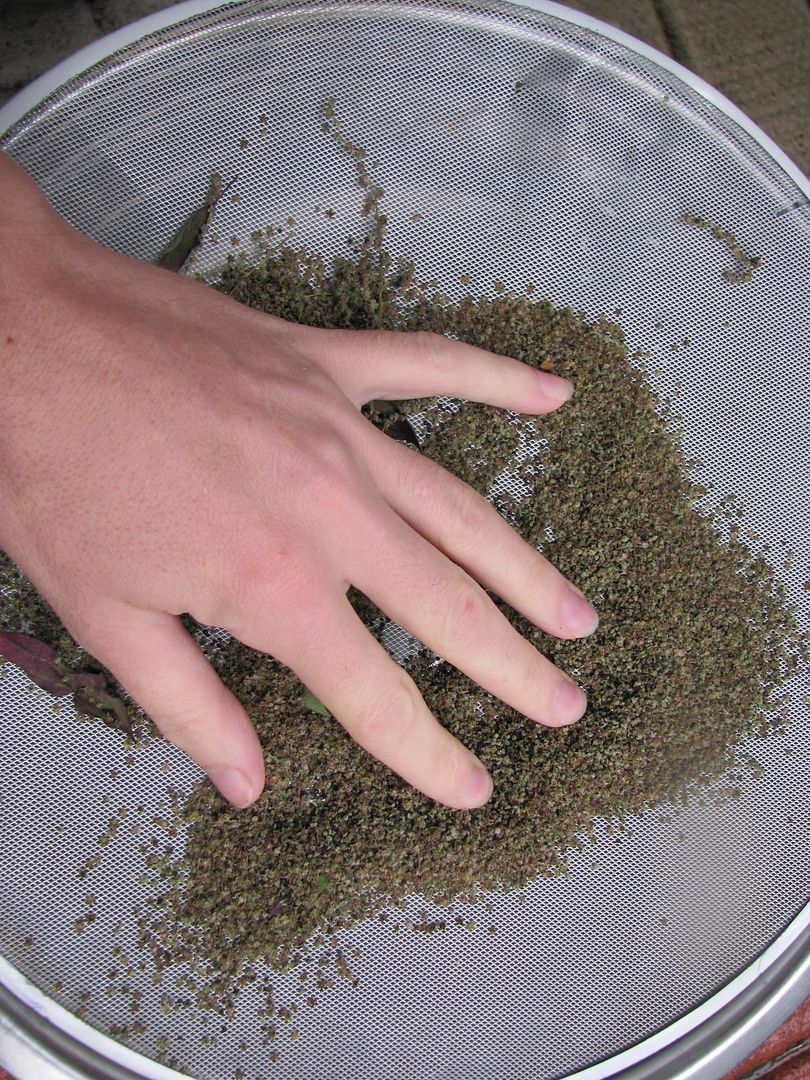
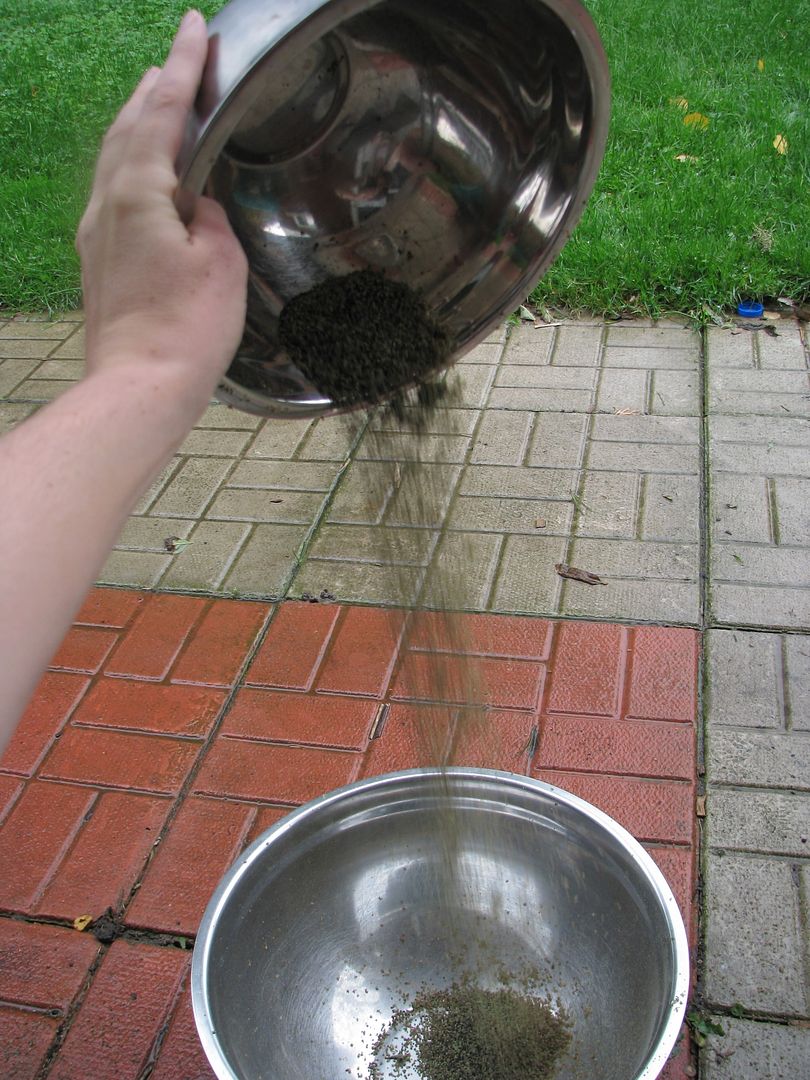
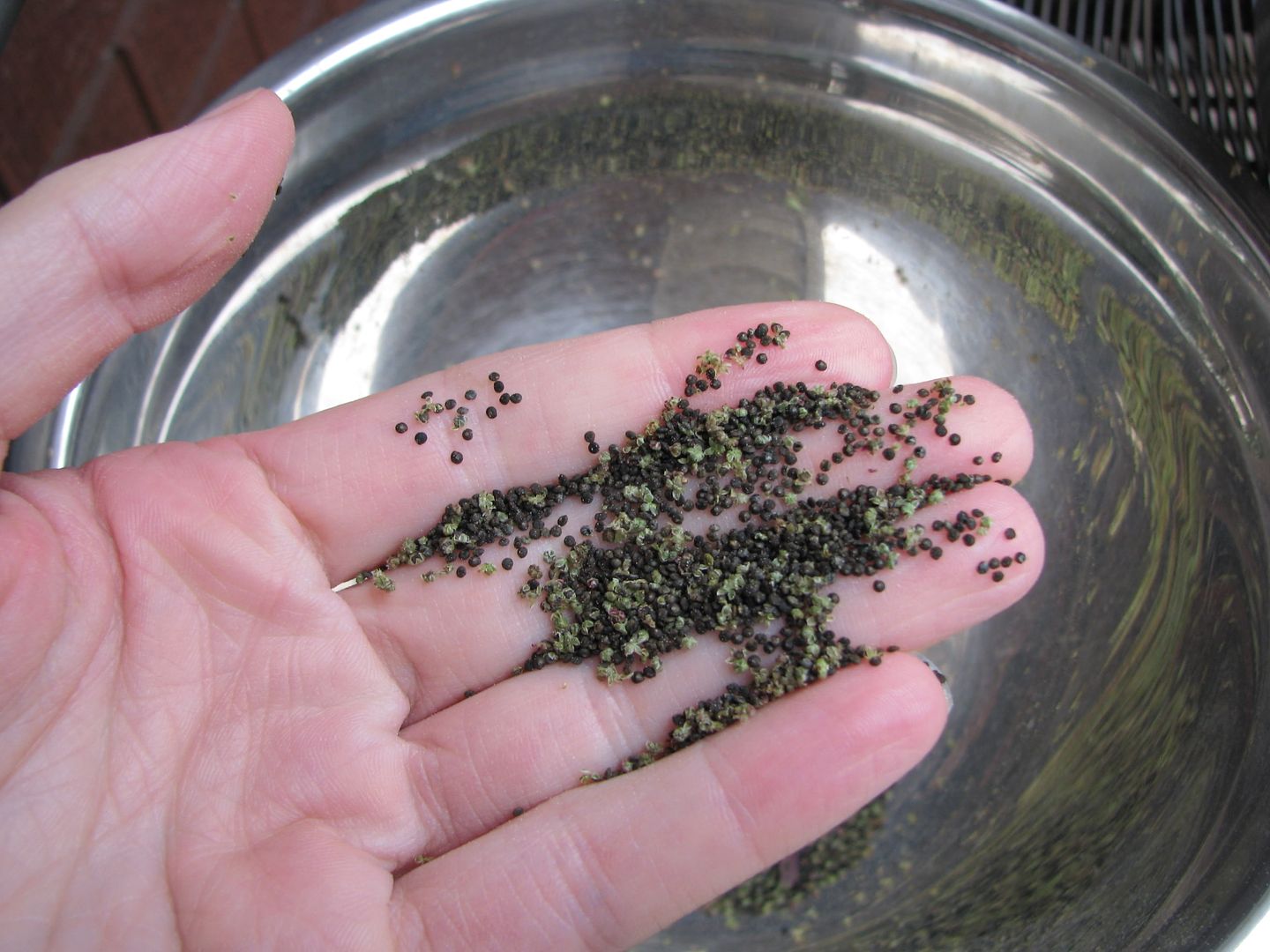
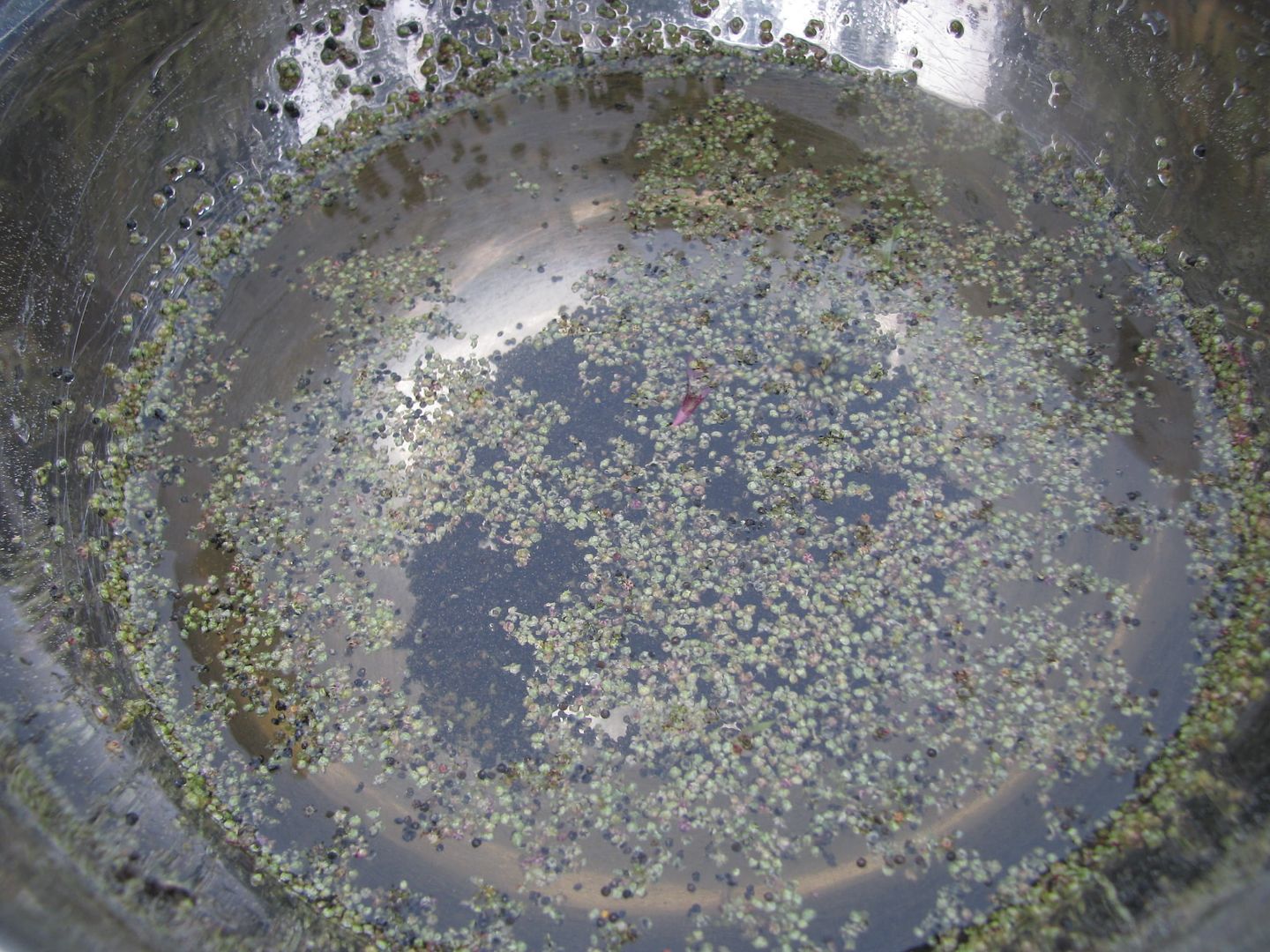
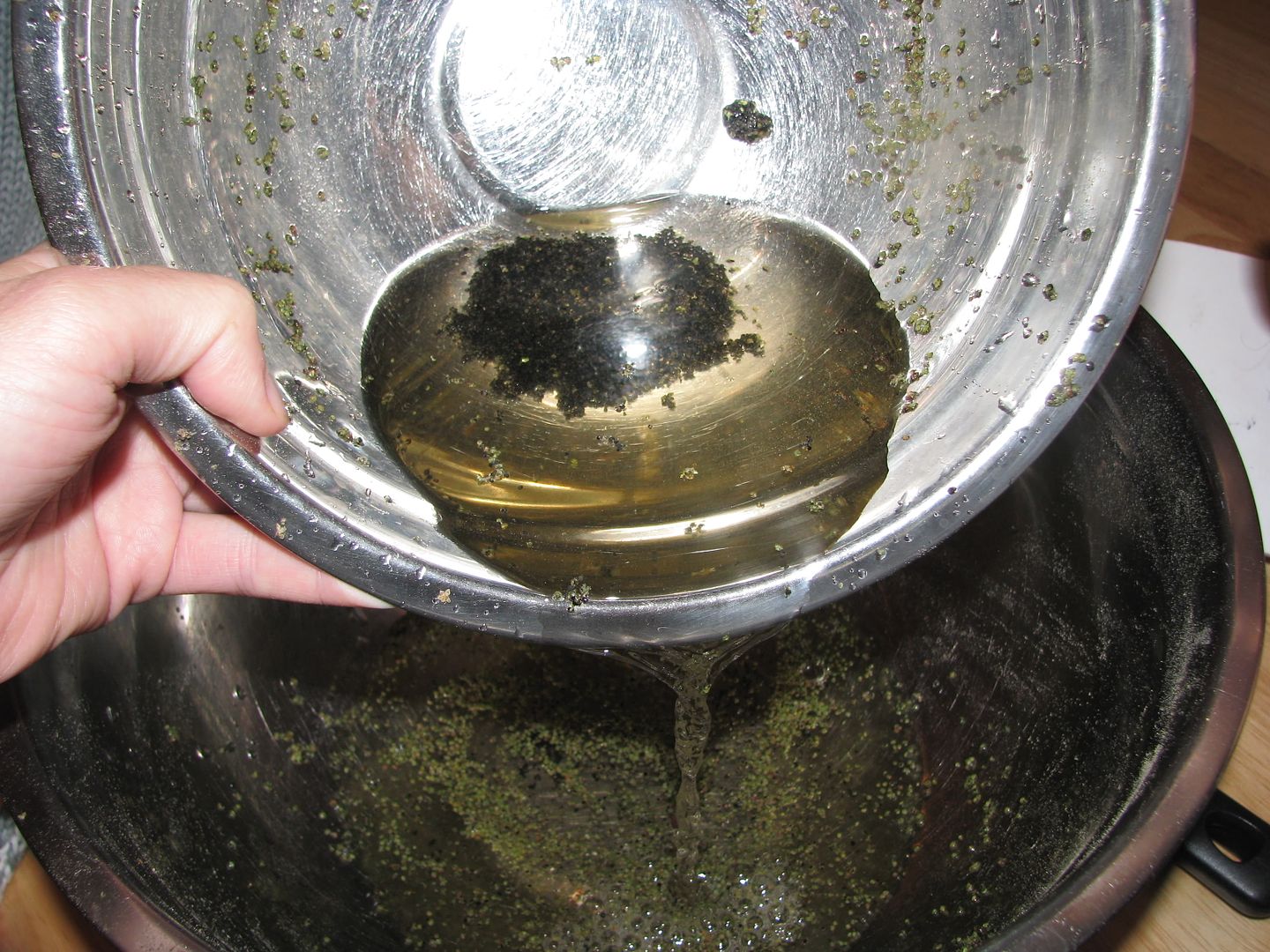
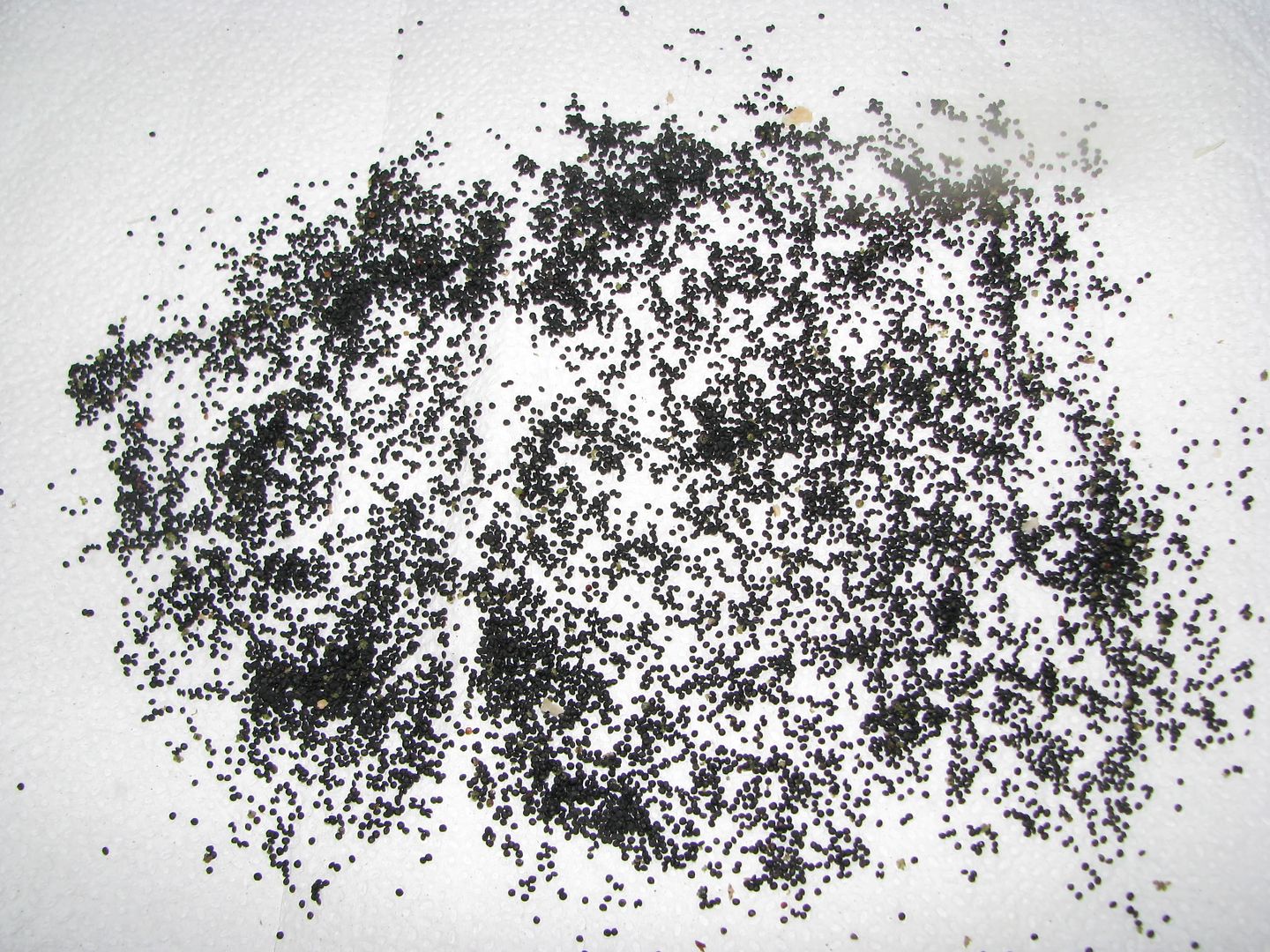
2 comments:
This is awesome. Thanks for the technique.
I use the water separation method for heavier seeds, like cucumbers and cantaloupe too. The heavier, denser seeds sink to the bottom, and those are the ones I save for next year.
Post a Comment